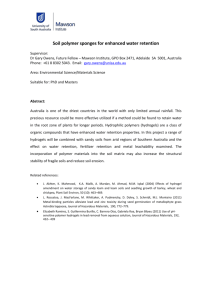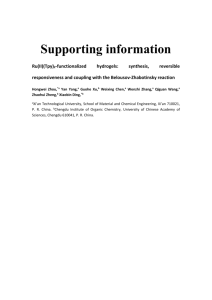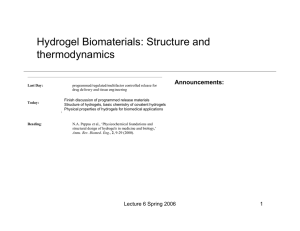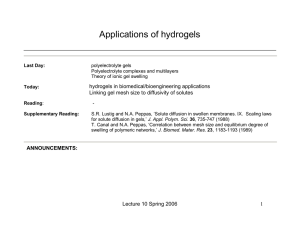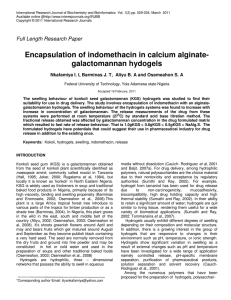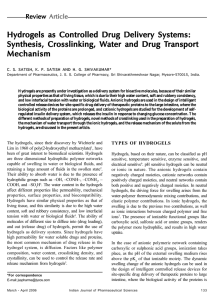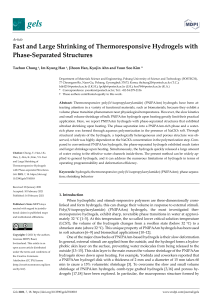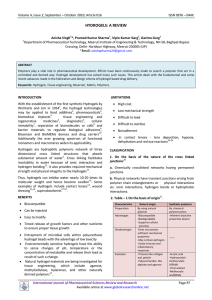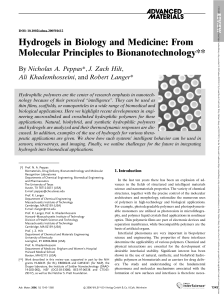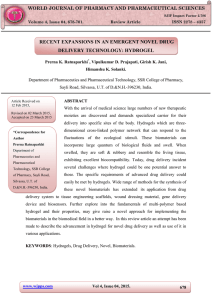Graduate Seminar Series 1-2012 201
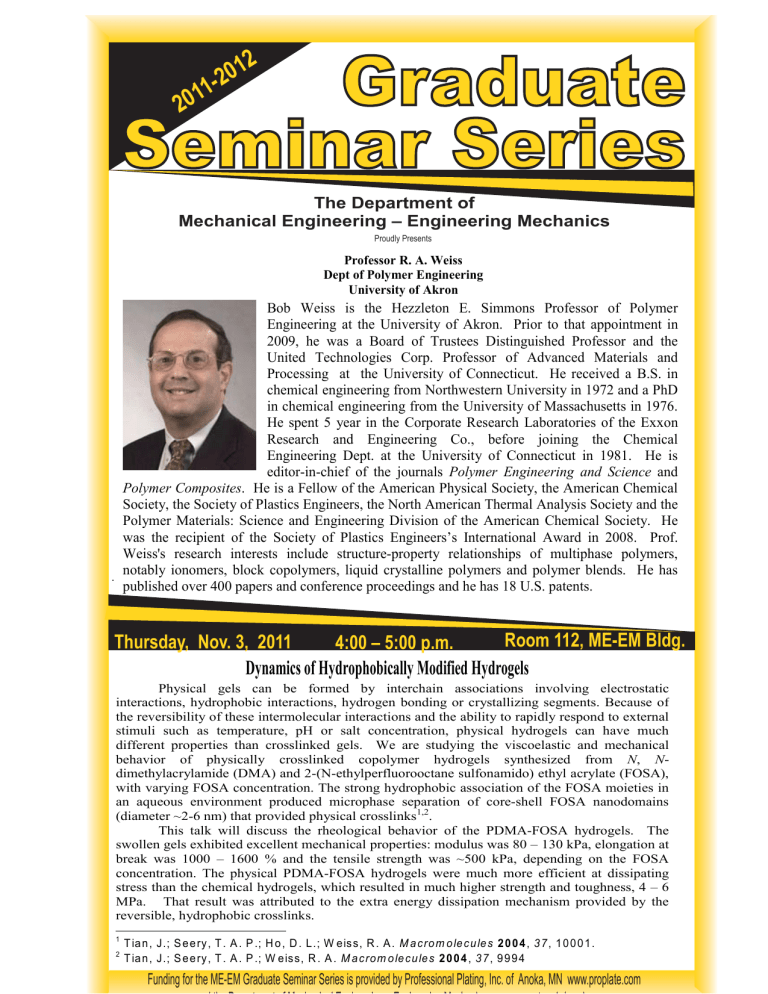
201
1-2012
Seminar Series
The Department of
Mechanical Engineering – Engineering Mechanics
Proudly Presents
.
Professor R. A. Weiss
Dept of Polymer Engineering
University of Akron
Bob Weiss is the Hezzleton E. Simmons Professor of Polymer
Engineering at the University of Akron. Prior to that appointment in
2009, he was a Board of Trustees Distinguished Professor and the
United Technologies Corp. Professor of Advanced Materials and
Processing at the University of Connecticut. He received a B.S. in chemical engineering from Northwestern University in 1972 and a PhD in chemical engineering from the University of Massachusetts in 1976.
He spent 5 year in the Corporate Research Laboratories of the Exxon
Research and Engineering Co., before joining the Chemical
Engineering Dept. at the University of Connecticut in 1981. He is editor-in-chief of the journals Polymer Engineering and Science and
Polymer Composites . He is a Fellow of the American Physical Society, the American Chemical
Society, the Society of Plastics Engineers, the North American Thermal Analysis Society and the
Polymer Materials: Science and Engineering Division of the American Chemical Society. He was the recipient of the Society of Plastics Engineers’s International Award in 2008. Prof.
Weiss's research interests include structure-property relationships of multiphase polymers, notably ionomers, block copolymers, liquid crystalline polymers and polymer blends. He has published over 400 papers and conference proceedings and he has 18 U.S. patents.
Thursday, Nov. 3, 2011 4:00 – 5:00 p.m.
Room 112, ME-EM Bldg.
Dynamics of Hydrophobically Modified Hydrogels
Physical gels can be formed by interchain associations involving electrostatic interactions, hydrophobic interactions, hydrogen bonding or crystallizing segments. Because of the reversibility of these intermolecular interactions and the ability to rapidly respond to external stimuli such as temperature, pH or salt concentration, physical hydrogels can have much different properties than crosslinked gels. We are studying the viscoelastic and mechanical behavior of physically crosslinked copolymer hydrogels synthesized from N , N dimethylacrylamide (DMA) and 2-(N-ethylperfluorooctane sulfonamido) ethyl acrylate (FOSA), with varying FOSA concentration. The strong hydrophobic association of the FOSA moieties in an aqueous environment produced microphase separation of core-shell FOSA nanodomains
(diameter ~2-6 nm) that provided physical crosslinks
1,2
.
This talk will discuss the rheological behavior of the PDMA-FOSA hydrogels. The swollen gels exhibited excellent mechanical properties: modulus was 80 – 130 kPa, elongation at break was 1000 – 1600 % and the tensile strength was ~500 kPa, depending on the FOSA concentration. The physical PDMA-FOSA hydrogels were much more efficient at dissipating stress than the chemical hydrogels, which resulted in much higher strength and toughness, 4 – 6
MPa. That result was attributed to the extra energy dissipation mechanism provided by the reversible, hydrophobic crosslinks.
2
1 T ian, J.; S eery, T . A . P .; H o, D . L.; W eiss, R . A . M acrom olecules 2004, 37, 10001.
T ian, J.; S eery, T . A . P .; W eiss, R . A . M acrom olecules 2004, 37, 9994
Funding for the ME-EM Graduate Seminar Series is provided by Professional Plating, Inc. of Anoka, MN www.proplate.com d th D t t f M h i l E i i E i i M h i t d / i


